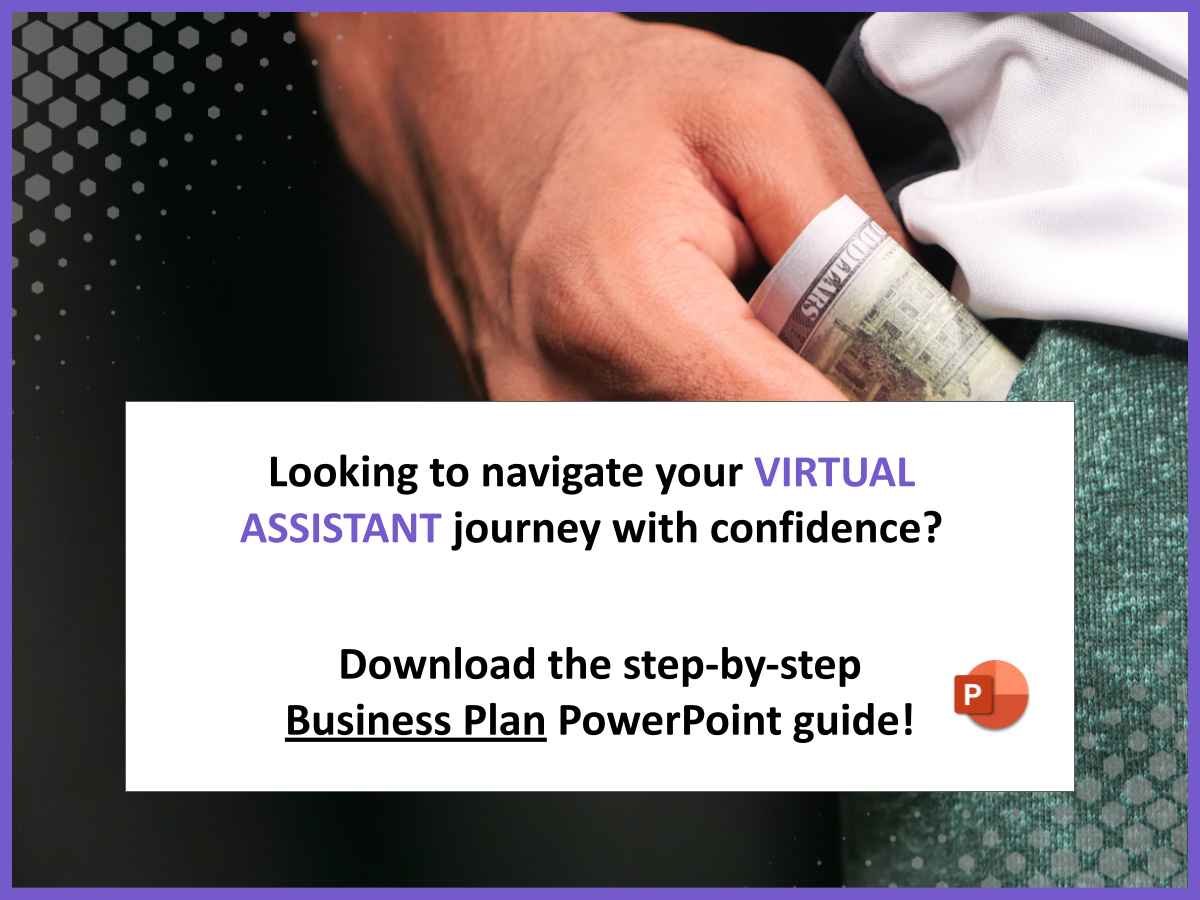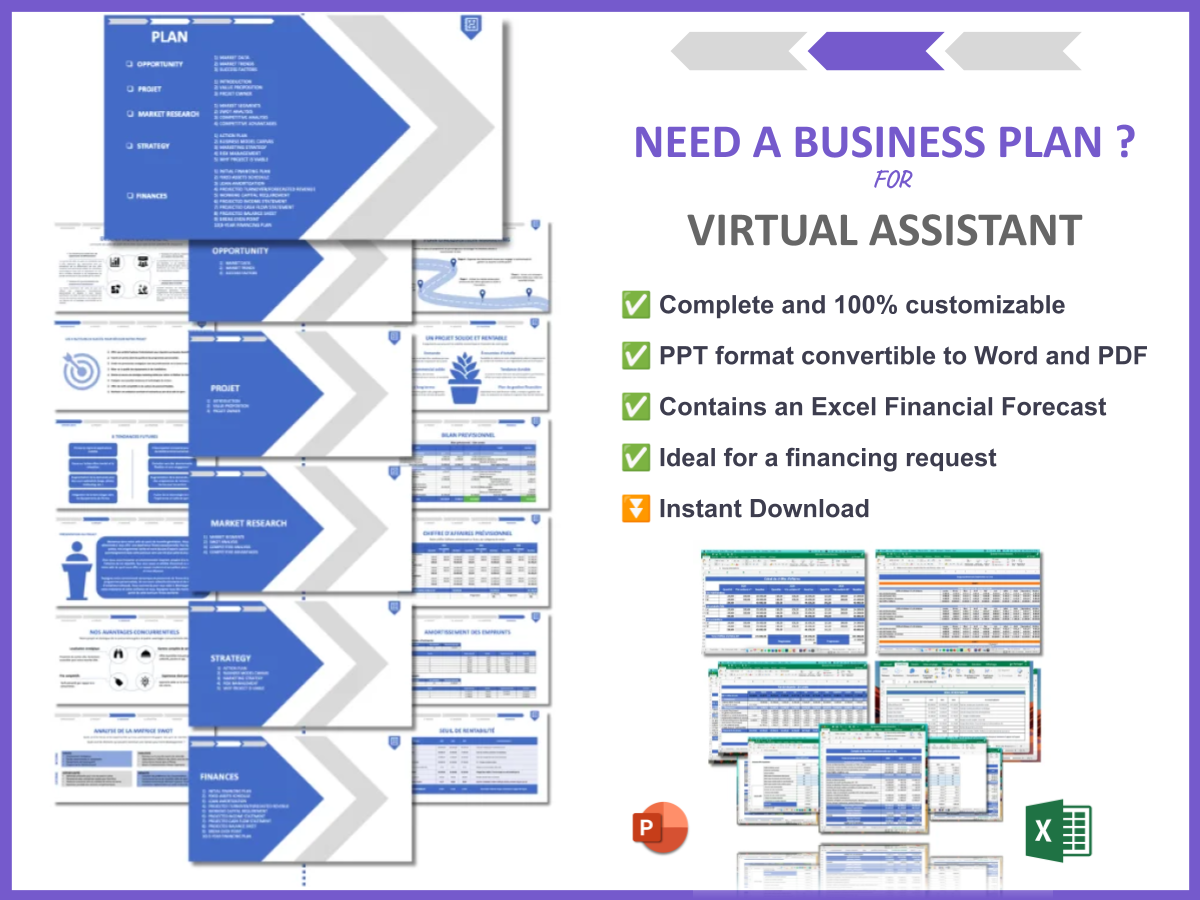Are you thinking about starting a virtual assistant business? You’re not alone! In fact, studies show that the demand for virtual assistants has surged by over 50% in recent years. This is a clear indication that more and more entrepreneurs are recognizing the value of outsourcing tasks to skilled professionals like you. A virtual assistant is someone who provides administrative, technical, or creative assistance to clients remotely. With the right strategies, you can build a successful business that not only offers you flexibility but also a lucrative income. In this article, we’ll cover:
- Identifying your niche in the virtual assistant market
- Creating a solid business plan for your virtual assistant venture
- Setting up your legal and financial structure
- Developing your brand and online presence
- Effective marketing strategies to attract clients
- Essential tools and resources to streamline your operations
1. Identify Your Niche in the Virtual Assistant Market
To answer the question of how to start a virtual assistant business, the first step is pinpointing your niche. Consider your skills, experience, and interests. Are you great at social media management, bookkeeping, or customer service? Narrowing down your focus can help you attract the right clients.
Here’s a quick list of potential niches:
- Social Media Management: If you love engaging with audiences online, this could be your thing.
- Content Creation: Perfect for those who enjoy writing, graphic design, or video production.
- Email Marketing: If you have a knack for persuasive writing and strategy, this niche is in high demand.
- Graphic Design: Creative individuals can thrive by offering design services.
- Data Entry: Great for detail-oriented people who enjoy organizing information.
Choosing a niche allows you to tailor your services and market effectively, so take your time to reflect on what you enjoy doing! This will not only make your work more enjoyable but will also position you as an expert in your field.
2. Create a Solid Business Plan for Your Virtual Assistant Venture
Next up in how to start a virtual assistant journey is crafting a business plan. A business plan is your roadmap; it outlines your goals, target audience, and strategies. I recommend checking out this business plan template for Virtual Assistant. It’s super detailed and can save you a ton of time!
Consider including the following sections in your business plan:
- Executive Summary: A brief overview of your business and its objectives.
- Market Analysis: Research your target market and competitors.
- Services Offered: Clearly define what services you will provide.
- Marketing Strategy: Outline how you plan to attract and retain clients.
- Financial Projections: Estimate your income and expenses to ensure profitability.
Having a clear plan can help you stay focused and organized as you launch your business. Remember, the process of developing your business plan is also a great opportunity to research and validate your business idea, ensuring there is a demand for the services you want to offer.
3. Decide on the Legal Structure for Your Virtual Assistant Business
Choosing the right legal structure is crucial in determining your tax obligations and personal liability. This step is vital in how to start a virtual assistant business. Common options include:
| Legal Structure | Pros | Cons |
|---|---|---|
| Sole Proprietorship | Easy to set up, complete control over business decisions | Unlimited personal liability, meaning your personal assets are at risk |
| LLC (Limited Liability Company) | Offers limited liability protection, flexible taxation options | More paperwork and slightly higher costs to establish |
| Corporation | Limited liability, easier to raise capital through shares | Complex structure, more regulations and oversight |
Consulting with a legal professional can help you make the best decision for your situation. Each structure has its advantages and disadvantages, so it’s important to choose one that aligns with your business goals and risk tolerance.
4. Set Up Your Financial Management Systems for Your Virtual Assistant Business
Understanding how to start a virtual assistant business also involves setting up your financial management systems. You need to track income and expenses accurately. Here are some tools you can use:
- QuickBooks: Great for invoicing and expense tracking, making it easy to manage your finances.
- FreshBooks: Excellent for managing client billing and offers time tracking features.
- Wave: Free accounting software ideal for small businesses, perfect for those just starting out.
Establishing a solid financial system early on can prevent headaches down the road! Additionally, consider setting up a separate business bank account to keep your personal and business finances separate. This practice will help you maintain clear records for tax purposes and give your business a more professional appearance.
5. Develop Your Brand and Online Presence
Your brand is more than just a logo; it’s how you present yourself to the world. In the journey of how to start a virtual assistant business, developing a strong brand is essential. Start by choosing a business name that reflects your niche and resonates with your target audience. Then, create a professional logo and branding materials that convey your unique style.
Next, you’ll want to establish an online presence:
- Create a website: Your website should showcase your services, include client testimonials, and provide a way for potential clients to contact you. Make sure it’s easy to navigate and visually appealing.
- Set up social media profiles: Choose platforms where your target audience hangs out, such as LinkedIn, Facebook, or Instagram. Regularly post engaging content that showcases your expertise and connects with your audience.
- Consider starting a blog: Sharing valuable content that demonstrates your knowledge can help attract visitors to your site and establish you as an authority in your niche.
Your online presence is crucial for attracting clients and establishing credibility. Remember, first impressions matter, and a polished online image can set you apart from competitors.
6. Market and Advertise Your Virtual Assistant Business
Now that you’ve got everything set up, it’s time to get the word out! Marketing is a key component in how to start a virtual assistant business. Here are some effective marketing strategies:
- Networking: Join online communities, forums, and attend local business events. Building relationships can lead to referrals and new clients.
- Social Media Marketing: Use platforms like LinkedIn and Facebook to connect with potential clients. Share your expertise and engage with your audience to build trust.
- Content Marketing: Create blog posts, videos, or infographics that provide valuable information to your target market. This can help attract visitors to your site and generate leads.
Consider this table for a quick overview of marketing channels:
| Marketing Channel | Benefits | Tips |
|---|---|---|
| Networking | Builds personal connections and trust | Attend local events and join online groups |
| Social Media | Engages directly with your audience | Post regularly and interact with followers |
| Content Marketing | Establishes authority in your niche | Focus on quality and relevance of content |
Don’t be shy about promoting yourself! It’s essential for getting clients. Consistent marketing efforts can lead to steady growth in your client base and help you achieve your business goals.
7. Assemble Your Team for Your Virtual Assistant Business
If you plan to scale your virtual assistant business, you might need to build a team. Consider hiring other VAs to take on specific tasks or projects. Here’s how to go about it:
- Define Roles: Determine what positions you need to fill based on the services you offer and your business goals. For instance, if you’re overwhelmed with client inquiries, you might need a customer service VA.
- Recruitment: Use platforms like Upwork, Fiverr, or LinkedIn to find qualified candidates. Be clear about the skills and experience you’re looking for in your job postings.
- Training: Ensure your team is well-trained and understands your business values. Provide them with the necessary resources and tools to succeed in their roles.
Building a team can help you take on more clients and increase your revenue. Remember, a strong team can also enhance the quality of service you provide, leading to better client satisfaction and retention.
8. Obtain Necessary Tax Identification Numbers, Licenses, and Permits for Your Virtual Assistant Business
Don’t forget about the legalities! Depending on where you’re located, you may need to obtain specific licenses or permits to operate legally. Here’s a quick checklist:
- Get an EIN (Employer Identification Number): This is necessary if you plan to hire employees or operate as a corporation or partnership.
- Check for local business licenses: Research if your city or state requires any specific licenses to operate a virtual assistant business.
- Research industry-specific permits: Some services may require additional certifications or permits, especially if they involve sensitive information or regulated activities.
Staying compliant with regulations can save you from future headaches. It’s important to keep all your documentation organized and up to date, as this will not only protect your business but also provide peace of mind as you focus on growing your client base.
9. Create a Unique Value Proposition for Your Virtual Assistant Business
Your unique value proposition (UVP) is what sets you apart from other virtual assistants. It’s essential to articulate why potential clients should choose you over competitors. Here are some tips to help you define your UVP:
- Identify Your Unique Skills: What specific skills do you possess that make you stand out? Maybe you have extensive experience in a niche area like real estate or e-commerce.
- Highlight Specialized Services: If you offer specialized services that others do not, make sure to emphasize these in your marketing materials. This could include advanced skills in software or particular industries.
- Focus on Client Relationships: Your approach to client relationships can be a significant differentiator. If you prioritize communication and personalized service, make this known.
Consider this table for defining your UVP:
| Aspect | Details |
|---|---|
| Skills | List the unique skills you have that are relevant to your target market. |
| Services | Outline specialized services that distinguish you from other VAs. |
| Client Focus | Describe your approach to client interaction and service delivery. |
Having a clear UVP can enhance your marketing efforts and attract the right clients. It allows you to communicate your strengths effectively, making it easier for potential clients to see the value you offer.
10. Set Your Pricing Strategy for Your Virtual Assistant Services
Determining how much to charge can be tricky but is a crucial aspect of how to start a virtual assistant business. Here are a few pricing strategies to consider:
- Hourly Rate: Charge clients based on the number of hours worked. This is a straightforward approach and works well for many VAs.
- Flat Rate: Set a fixed fee for specific services. This can simplify billing and make it easier for clients to budget.
- Retainer: Clients pay a monthly fee for a set number of hours or services. This model can provide consistent income and foster long-term relationships.
Consider this table for pricing models:
| Pricing Model | Description | Ideal For |
|---|---|---|
| Hourly Rate | Charge based on time spent on tasks | Flexible projects with varying workloads |
| Flat Rate | Set price for specific services | Clients who prefer predictable costs |
| Retainer | Monthly fee for a dedicated service | Ongoing projects and long-term clients |
Research what other VAs are charging to ensure your rates are competitive yet reflective of your skills. Pricing can significantly impact your business’s success, so take the time to find a balance that works for you and your clients.
11. Leverage Technology and Tools for Your Virtual Assistant Business
Using the right tools can streamline your operations and enhance your productivity. In the world of how to start a virtual assistant business, technology plays a vital role. Here are some essential tools to consider:
- Project Management: Tools like Trello or Asana can help you organize tasks, manage deadlines, and collaborate with clients and team members effectively.
- Communication: Slack or Zoom are excellent for client communication, enabling you to hold meetings, share files, and stay connected.
- Time Tracking: Toggl or Harvest allow you to track billable hours accurately, ensuring you’re compensated for all the work you do.
Consider this table for a quick overview of useful tools:
| Tool | Purpose | Benefits |
|---|---|---|
| Trello | Project Management | Visual organization of tasks and deadlines |
| Slack | Communication | Real-time messaging and collaboration |
| Toggl | Time Tracking | Accurate tracking of work hours for billing |
Investing in technology can improve your efficiency and client satisfaction. By leveraging these tools, you can focus more on delivering exceptional service to your clients rather than getting bogged down in administrative tasks.
12. Continuously Develop Your Skills and Offerings as a Virtual Assistant
The virtual assistant landscape is always evolving. To stay competitive, consider:
- Taking Online Courses: Platforms like Udemy or Coursera offer courses that can help you learn new skills or enhance existing ones.
- Networking with Other VAs: Join online forums or groups to exchange knowledge, tips, and resources with fellow virtual assistants.
- Staying Updated on Industry Trends: Subscribe to industry newsletters or blogs to keep up with the latest developments and best practices.
By continuously improving, you can offer better services and attract more clients. Remember, your clients will appreciate your commitment to professional growth, which can also lead to increased trust and loyalty.
13. Evaluate Your Business Progress Regularly
Finally, it’s important to evaluate your business progress regularly. Set aside time to review your goals, finances, and client feedback. Here are some effective methods for assessing your progress:
- Track Your Earnings and Expenses: Monitor your financial performance monthly to identify trends and areas for improvement.
- Solicit Feedback from Clients: Regularly ask clients for feedback on your services to identify strengths and areas for growth.
- Adjust Your Business Plan: Based on your evaluations, be prepared to make necessary adjustments to your business plan to stay aligned with your goals.
Regular evaluations can help you stay on track and make necessary adjustments to grow your business. By taking the time to reflect on your progress, you can ensure that your virtual assistant business remains successful and continues to meet the needs of your clients.
Conclusion
Starting a virtual assistant business can be a rewarding venture, offering flexibility and the opportunity to work with diverse clients. By following the steps outlined in this article, you can effectively set up your business, develop your skills, and attract clients. Remember, the journey doesn’t end once you launch; continuous improvement and adaptation are key to long-term success.
To further enhance your knowledge, check out our articles on how to create a SWOT Analysis for Virtual Assistant and how to initiate a Virtual Assistant Marketing Plan. These resources will provide you with additional strategies and insights to help you thrive in the virtual assistant industry.
FAQ
- What skills do I need to be a virtual assistant?
To be a successful virtual assistant, you should have strong organizational skills, excellent communication abilities, and proficiency in various software tools. Specialized skills in areas like social media management, bookkeeping, or graphic design can also be beneficial. - How do I find clients as a virtual assistant?
You can find clients through networking, social media, and online platforms like Upwork or Fiverr. Building a professional website and showcasing your services can also attract potential clients. - What services can I offer as a virtual assistant?
Common services include administrative support, social media management, content creation, email marketing, and bookkeeping. It’s best to choose services that align with your skills and interests. - How much can I charge as a virtual assistant?
Rates can vary widely based on your experience and the services you offer. Typically, virtual assistants charge between $25 to $75 per hour, but you can also set flat rates for specific services. - Do I need a business license to be a virtual assistant?
This depends on your location. Some areas may require a business license or permit to operate legally. Always check your local regulations to ensure compliance. - How can I market my virtual assistant business?
Marketing strategies include networking, social media marketing, content marketing, and building a professional website. You can also leverage word-of-mouth referrals from satisfied clients. - What tools do I need to be a virtual assistant?
Essential tools include project management software (like Trello or Asana), communication tools (like Slack or Zoom), and time tracking software (like Toggl or Harvest) to manage your workflow efficiently. - How do I set my rates as a virtual assistant?
Research the market rates for virtual assistants in your niche and consider your experience level when setting your prices. You can choose hourly rates, flat fees, or retainer agreements. - What are the benefits of being a virtual assistant?
Benefits include flexible working hours, the ability to work from anywhere, and the opportunity to choose your clients and projects. It also allows for a better work-life balance. - How can I improve my skills as a virtual assistant?
Consider taking online courses, attending workshops, and networking with other virtual assistants. Staying updated on industry trends and continuously learning new skills will help you remain competitive.







